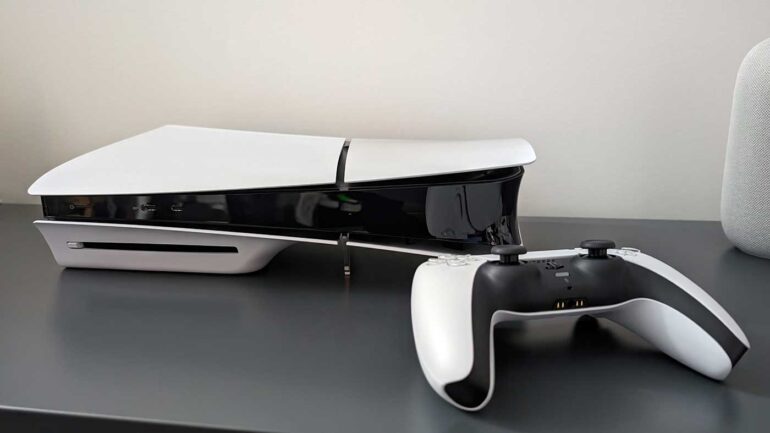When the PlayStation 5 was first revealed, reactions to its bold design were definitely mixed. The wavy, two-tone aesthetic coupled with the sheer size of the thing certainly makes for a statement in any room you put it in – and arguably that was the idea all along. Still, there’s something to be said for a cheeky redesign a few years into any console’s lifecycle and while PlayStation seemingly isn’t ready to abandon the PS5’s unique silhouette any time soon it has seen fit to launch a slimmer and more refined take on the device to carry the torch going forward.
Technically remaining under the standard PlayStation 5 moniker, the PS5 Slim as it’s known represents a more than 30% reduction in overall volume and up to 24% reduction in weight versus the previous version of the console, no doubt in an effort to reduce manufacturing time and costs as the public continues to buy up PS5s at a cracking pace. Despite shedding nearly a third of its size, I was initially surprised at how big the console still is when I took it out of the box. Placing it next to an OG unit though, and really comparing the footprint and weights of the two, it is a pretty significant reduction. Not life-changing, but definitely enough that some folks will finally be able to squeeze it into their cabinets or onto their desks.
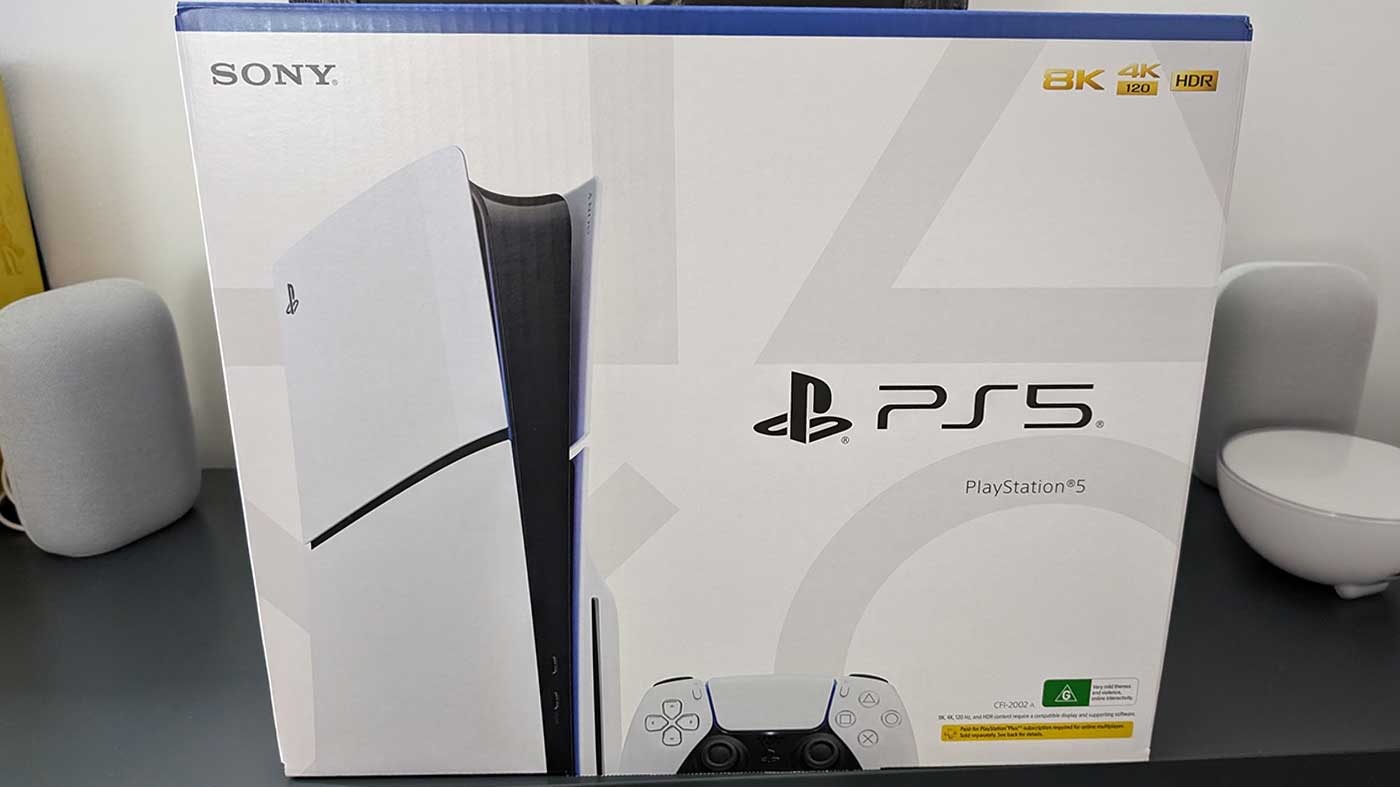
At a glance, it’s also pretty similar to the original PS5 in design, but there are some important differences. The most obvious one being the splitting of its two cover plates into a total of four panels. This facilitates the introduction of a removable optical disc drive giving those who purchase the digital edition of the console the flexibility to later purchase the drive and attach it to the console. I’m not entirely sold on the glossy finish of the two smaller panels, but I’ve no doubt I’ll be picking up the matte black official set when Sony launches them in the future, anyway.
My review unit came as the drive-inclusive package, but naturally the first thing I did was check out how it all works, and removing or attaching the tray is deceptively simple. For starters the panels themselves are easier to take off versus the OG PS5, rather than the awkward lift-and-slide method from before, they basically just peel off now without having to use too much force and there are handy visual guides etched into the undersides to make clicking them back into place nice and simple. The optical drive’s design wizardry means it just lifts out with no screws or latches of any kind to deal with, and putting it on is as easy as lining up the very-obvious connector and then pushing it in until it clicks. Finding an elegant-but-feasible solution for a modular drive like this can’t have been a simple task but PlayStation’s engineers and architects have nailed it I reckon.
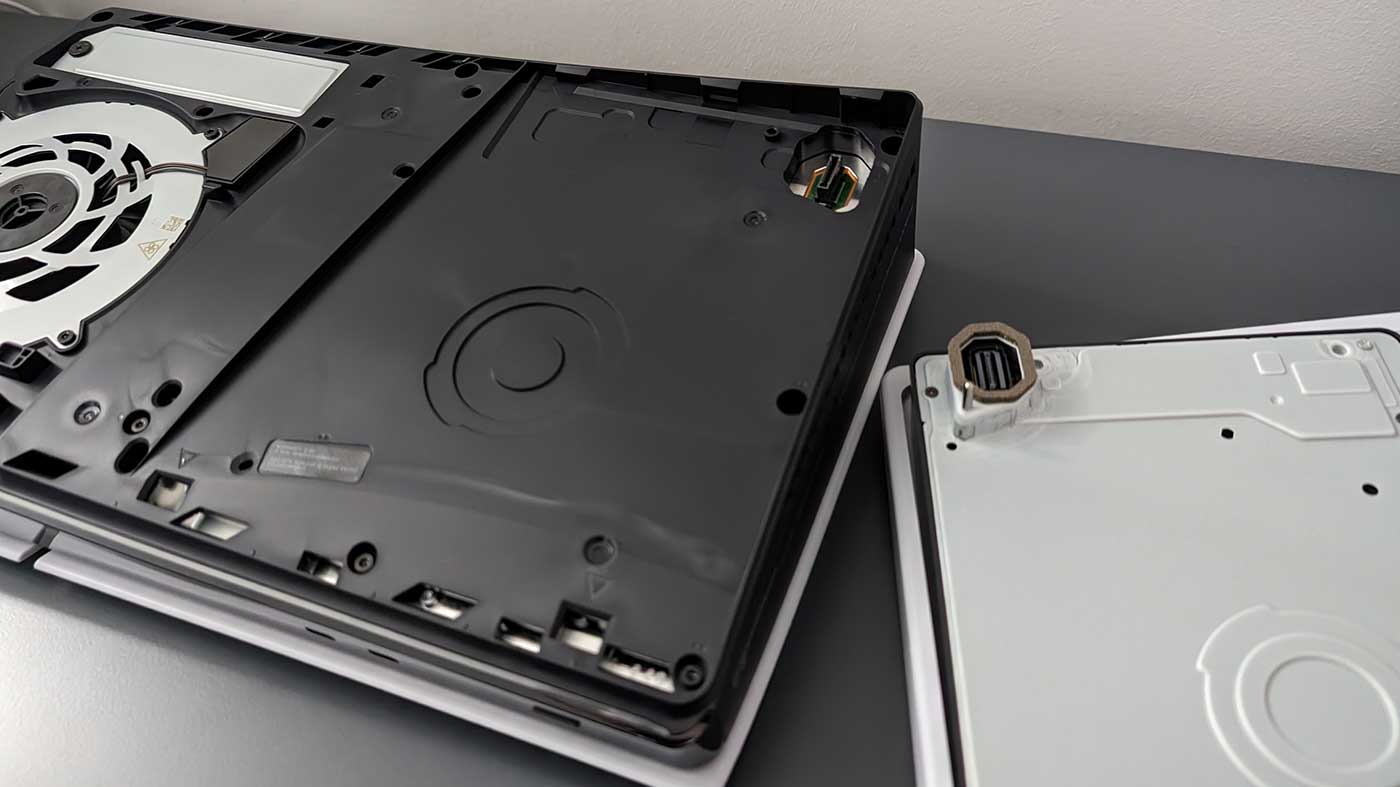
An unexpected but very welcome byproduct of the new disc drive design is also that the eject button has now been moved to sit next to the disc slot itself, which may seem inconsequential but as someone who still struggles to remember which of the barely-distinguishable buttons on the front of the original model is which I was glad to see there’s absolutely no mistaking them now. It’d be nice to see Sony ditch the requirement to pair the weird DRM system of connecting to the internet to register the disc drive the first time you use it, which means buying them secondhand could come with headaches, but it’s at least a very painless, 10-second process to pair or unpair it.
Elsewhere on the front panel of the console, there are now two USB-C ports instead of a combination of one USB-C and one USB-A, which seems like a smart move even if only one of them is a SuperSpeed USB 3.1 Gen 2 port. The PlayStation VR2 needs that other, high speed USB-C port which previously left just the aging USB-A in front while the vast majority of external devices have since moved to the newer format. There are still two SuperSpeed USB-A 3.1 Gen 2 ports on the back if you need them, along with the same HDMI, ethernet and power connections as before, just in slightly different placements now. Unsurprisingly, the DualSense wireless controller included with the console is exactly the same as before, though the charging cable you get in the box is now USB-C on both sides to accommodate the updated ports on the console.
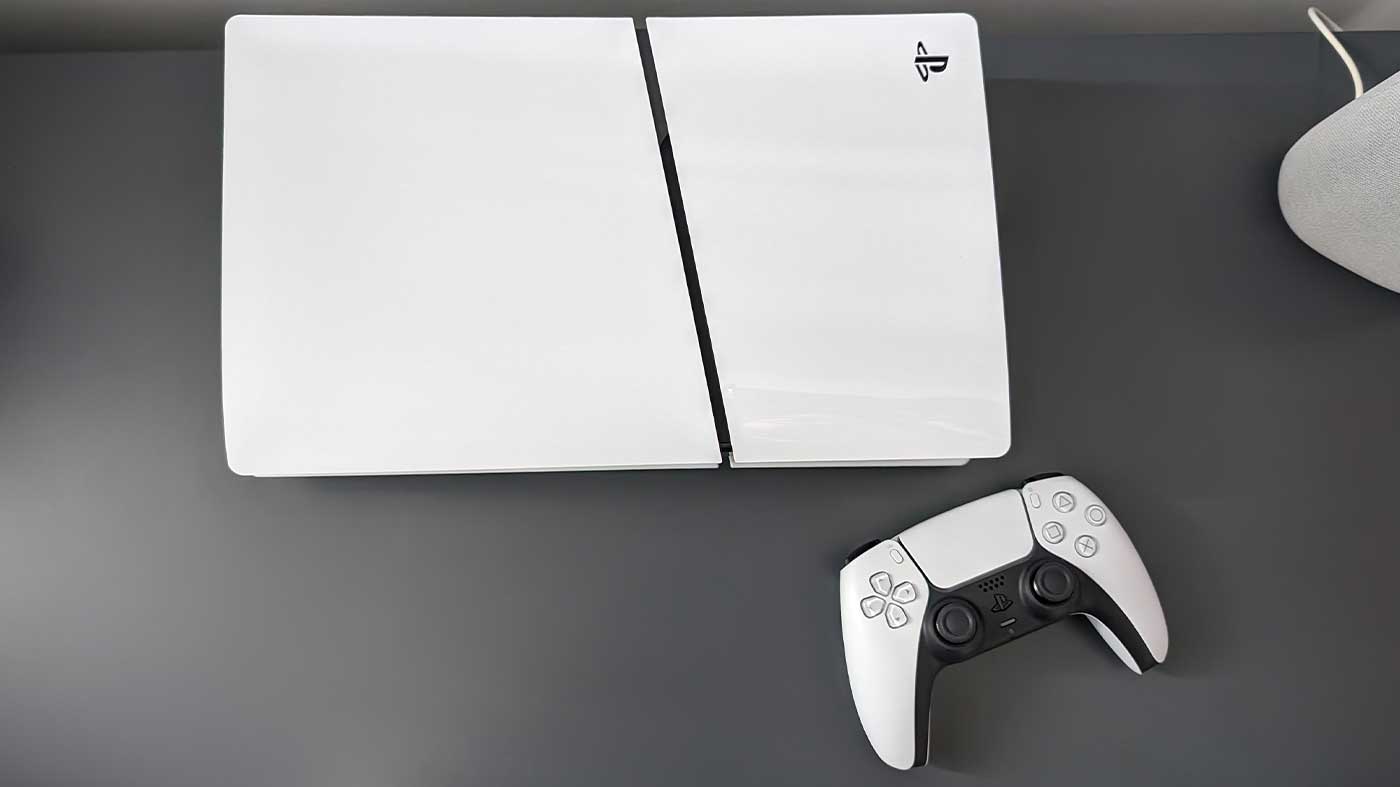
The other major external difference in the slimmer PS5 is the ditching of the old, awkward combination horizontal/vertical stand. Somewhat controversially, what you get in the box now is a couple of tiny, plastic peg legs to set the console up in a horizontal position. In spite of initial doubts, I’m actually shocked at how much better these are over the old stand when it comes to horizontal placement. There are dedicated holes in the underside of the console for them, cleverly placed right between the two cover panels, and the legs themselves have a rubber end where they sit on your bench/cabinet which immediately makes the PS5 far more stable than ever with much less fuss and second-guessing than the old stand.
That said, what this means is there’s no longer a solution in the box for standing the PS5 up in a vertical position. Instead, PlayStation now sells a dedicated Vertical Stand separately that works with both the new and old PS5 models. Granted, the updated Vertical Stand is also significantly better than the last one in terms of design, installation and stability, and the new PS5 stands up just fine on its own, but there’s no glossing over the fact that it’s an added $49.95 cost to the console that didn’t previously exist if you want the added peace of mind. With the drive-inclusive version still costing the same $799.95 as before and the digital version getting an increase to $679.95 it’s an unfortunate case of the new, slim PS5 being more expensive in some cases than its predecessor.
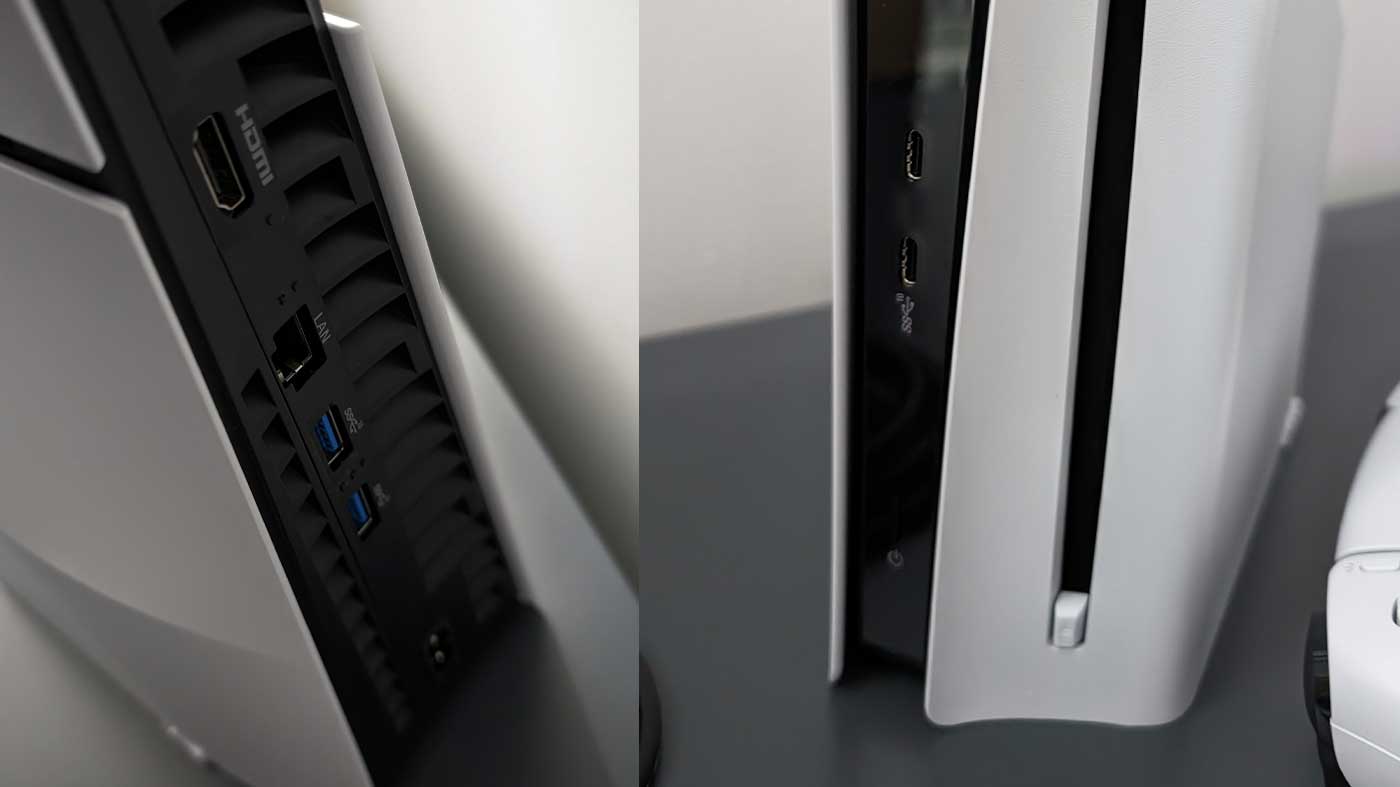
Under the hood, the story is maybe a little less remarkable than the exterior updates. In terms of the chipset, RAM, network hardware and other bits everything is the same and nothing internally has been updated in a way that impacts performance either positively or negatively over the prior version. Everything looks and plays exactly the same, so if you were hoping to see any kind of bump up you’ll have to hold out hope for some degree of “Pro” iteration in the future. Likewise, if you were worried about the smaller form factor leading to any added noise or heat – I’m happy to report that there’s been absolutely no discernable difference between my two machines.
The great news is that the slimmer PS5’s internal storage has been improved, now bumped up to 1TB over the original PS5’s somewhat quirky 825GB capacity. Even after considering the space the console needs sectioned off in order to operate, it’s still packing more than the previous total at 840GB of usable storage – a massive upgrade over the 670GB-ish of the OG. Of course, there’s still a user-servicable M.2 SSD slot under one of the top panels that you can use to further increase your storage space for PS5 and PS4 titles, but the extra Call of Duty’s worth of space out of the box is incredibly welcome.
If I had to level one slight criticism at the internal updates on this new PS5, I reckon there’s a missed opportunity to have included PlayStation’s fancy new Link technology on-board so folks with the new Pulse Explore or upcoming Pulse Elite headsets could pair up without needing the adapter.


